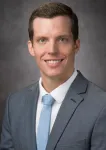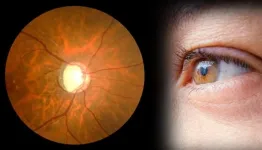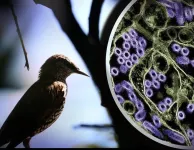(Press-News.org) Researchers at the University of Pittsburgh have developed a nasal swab test for kids that diagnoses specific asthma subtype, or endotype. This non-invasive approach could help clinicians prescribe medications more precisely and pave the way for research toward better treatments for lesser-studied asthma types, which have been difficult to diagnose accurately until now.
Published today in JAMA, the findings are based on data from three independent U.S.-based studies that focused on Puerto Rican and African American youths, who have higher rates of asthma and are more likely to die from the disease than their non-Hispanic white counterparts.
“Asthma is the most common chronic disease of childhood, and it disproportionately affects Black and Puerto Rican children, so it’s essential that we develop new therapies to better treat these young patients,” said senior author Juan Celedón, M.D., Dr.P.H., professor of pediatrics at Pitt and chief of pulmonary medicine at UPMC Children’s Hospital of Pittsburgh. “Because asthma is a highly variable disease with different endotypes, which are driven by different immune cells and respond differently to treatments, the first step toward better therapies is accurate diagnosis of endotype.”
Traditionally, asthma has been classified into endotypes known as T2-high or T2-low based on the amount of T helper 2 inflammation present. More recently, T2-low has been split into two endotypes: T17-high, which has less T helper 2 inflammation and more T helper 17 inflammation, and low-low, which has low levels of both types of inflammation.
Precise diagnosis of endotype usually involves genetic analysis of a lung tissue sample taken by a procedure called a bronchoscopy, which is done under general anesthesia. For children, especially those with milder disease, it’s not feasible or ethical to perform this invasive procedure, so clinicians have had to rely on imperfect tools, including immune markers in the blood, lung function and whether or not they have allergies.
“These tests allow us to presume whether a child has T2-high disease or not,” said Celedón. “But they are not 100% accurate, and they cannot tell us whether a child has T17-high or low-low disease. There is no clinical marker for these two subtypes. This gap motivated us to develop better approaches to improve the accuracy of asthma endotype diagnosis.”
Celedón and his team, including first authors Molin Yue, M.S., a Pitt graduate student, and Kristina Gaietto, M.D., M.P.H., instructor of pediatrics at Pitt, collected nasal samples from 459 youth across three different studies. Then they analyzed the expression of eight T2 and T17 signature genes.
As expected, analysis of nasal swab samples revealed a patient’s endotype. Across studies, 23% to 29% of participants had T2 high, 35% to 47% had T17-high and 30% to 38% had low-low endotype.
For treating severe T2-high asthma, there is a powerful new class of drugs called biologics, which target the immune cells that drive disease. However, no available asthma biologics directly target T17-high and low-low endotypes.
“We have better treatments for T2-high disease, in part, because better markers have propelled research on this endotype,” said Celedón. “But now that we have a simple nasal swab test to detect other endotypes, we can start to move the needle on developing biologics for T17-high and low-low disease.”
This rapid test for asthma endotype could also help push forward other areas of asthma research.
“One of the million-dollar questions in asthma is why some kids get worse as they enter puberty, some stay the same and others get better. Before puberty, asthma is more common in boys, but the incidence of asthma goes up in females in adulthood,” said Celedón. “Is this related to endotype? Does endotype change over time or in response to treatments? We don’t know. But now that we can easily measure endotype, we can start to answer these questions.”
Gustavo Matute-Bello, M.D., acting director of the Division of Lung Diseases at the National Heart, Lung, and Blood Institute, part of the National Institutes of Health (NIH) added, “Having tools to test which biological pathways have a major role in asthma in children, especially those who have a disproportionate burden of disease, may help achieve our goal of improving asthma outcomes. This research has the potential to pave the way for more personalized treatments, particularly in minority communities. More studies are needed.”
Other authors on the study were Yueh Ying Han, Ph.D., Franziska J. Rosser, M.D., M.P.H., Zhongli Xu, Christopher Qoyawayma, B.S.E., Erick Forno, M.D., M.P.H., and Wei Chen, Ph.D., all of Pitt and UPMC; and Edna Acosta-Perez, Ph.D., and Glorisa Canino, Ph.D., both of the University of Puerto Rico.
This research was supported by the NIH (HL079966, HL117191, HL150431, HL119952, UL1TR001857, HL129949, K08 HL159333 and HL149693).
This content is solely the responsibility of the authors and does not necessarily represent the official views of the NIH.
END
The nose knows: Nasal swab detects asthma type in kids
2025-01-02
ELSE PRESS RELEASES FROM THIS DATE:
Knowledge and worry following review of standard vs patient-centered pathology reports
2025-01-02
About The Study: Most study participants could not extract basic information—including whether they have cancer—from standard prostate cancer pathology reports but were able to understand this diagnostic information from the patient-centered pathology reports (PCPRs). Also, they discriminated between risk levels (i.e., lower levels of perceived worry in the low-risk condition) with PCPRs compared with standard reports. Hospital systems should consider including PCPRs with standard pathology reports to improve patient understanding.
Corresponding ...
Cardiovascular disease and breast cancer stage at diagnosis
2025-01-02
About The Study: This case-control study found that individuals with more advanced breast cancer at diagnosis were more likely to have prevalent cardiovascular disease. This finding may be specific to hormone receptor–positive and ERBB2-negative (formerly HER2) disease. Future studies are needed to confirm these findings and investigate interventions to improve patient outcomes, including personalized cancer screening.
Corresponding Author: To contact the corresponding author, Kevin T. Nead, MD, MPhil, email ktnead@mdanderson.org.
To access the embargoed study: Visit our For The Media website at this link https://media.jamanetwork.com/
(doi:10.1001/jamanetworkopen.2024.52890)
Editor’s ...
Herpes virus might drive Alzheimer's pathology, study suggests
2025-01-02
PITTSBURGH, Jan. 2, 2025 – University of Pittsburgh researchers uncovered a surprising link between Alzheimer’s disease and herpes simplex virus-1 (HSV-1), suggesting that viral infections may play a role in the disease. The study results are published today in Cell Reports.
The study also revealed how tau protein, often viewed as harmful in Alzheimer’s, might initially protect the brain from the virus but contribute to brain damage later. These findings could lead to new treatments targeting infections and the brain’s immune response.
“Our study challenges ...
Patients with heart disease may be at increased risk for advanced breast cancer
2025-01-02
HOUSTON ― Cardiovascular disease (CVD) and cancer are the two leading causes of death in the U.S. According to researchers from The University of Texas MD Anderson Cancer Center, patients diagnosed with late-stage or metastatic breast cancer have a statistically significant increased risk of pre-diagnosis CVD compared to those with early-stage cancer at diagnosis.
The study, published today in JAMA Network Open, found those with advanced breast cancer at diagnosis were 10% more likely to have had pre-existing ...
Chinese Medical Journal study reveals potential use of artificial intelligence (AI) in finding new glaucoma drugs
2025-01-02
Glaucoma is a progressive eye disorder characterized by fluid buildup inside the eye, causing ocular hypertension. By 2040, it is estimated that 111.8 million people worldwide will be affected by glaucoma, potentially leading to blindness if left untreated. Currently, there are treatments available to manage ocular hypertension, but a cure for glaucoma remains elusive.
Retinal ganglion cells (RGCs) are crucial for transmitting visual signals from the eyes to the brain, and their degeneration leads to optic nerve damage, which is a hallmark of glaucoma. In recent years, scientists ...
Genomic analysis of modern maize inbred lines reveals diversity and selective breeding effects
2025-01-02
Maize is a globally cultivated staple crop and one of the most successful examples of heterosis utilization in food production. The development of elite inbred lines is critical for breeding hybrid varieties and achieving sustained yield improvements. However, efficient breeding of inbred lines faces significant challenges, including the broad origins of germplasm resources, complex and diverse genetic structures, and low accuracy in phenotypic prediction. Advances in modern genomics and artificial intelligence technologies ...
Research alert: Enzyme promoting tumor growth and spread in pancreatic cancer identified
2025-01-02
Pancreatic cancer kills 50,000 people each year, according to the National Cancer Institute, and there are few effective treatment options for the disease. In a new study, researchers at University of California San Diego School of Medicine have discovered that an enzyme called MICAL2 promotes tumor growth and spread in pancreatic ductal adenocarcinomas (PDAC), the most common form of pancreatic cancer. The study will be published on January 2, 2025 in Cancer Research, a journal of the American Association for Cancer Research.
Normally, MICAL2 plays an important role in cell migration and morphology. But when the researchers measured ...
NIH officials assess threat of H5N1
2025-01-02
WHAT:
Highly pathogenic H5N1 avian influenza A virus (HPAI H5N1) remains a low risk to the general public, and public health experts in the United States believe that available treatments and vaccines, as well as those in development, are sufficient to prevent severe disease. However, the National Institutes of Health (NIH) and its federal partners remain focused on monitoring the virus and evaluating changes, according to leading officials at the National Institute of Allergy and Infectious Diseases (NIAID), part of the NIH.
In a commentary published in the New England Journal of Medicine, NIAID Director Jeanne M. Marrazzo, M.D., M.P.H., and Michael G. Ison, M.D., M.S., chief ...
Study finds physical activity reduces chronic disease risk
2025-01-02
University of Iowa researchers are recommending all patients be surveyed about their physical activity levels, after a new study underscores the link between physical activity and chronic disease.
The study, led by Lucas Carr, associate professor in the Department of Health and Human Physiology, examined responses from more than 7,000 patients at University of Iowa Health Care Medical Center who noted their level of physical activity in a questionnaire.
From patients’ answers to the questionnaire, the researchers found that those who reported the highest level of physical activity — meaning they exercised moderately ...
Based on AI-powered De novo Generation, Insilico Medicine nominates ISM1745 as preclinical candidate targeting PRMT5
2025-01-02
Since 2021, Insilico Medicine has successfully nominated 22 preclinical candidates (PCCs) with the help of its proprietary Pharma.AI platform, among which 5 were nominated just the year of 2024.
The novel scaffold of ISM1745 is based on de novo generation results of Insilico’s Chemistry42, the generative AI platform combining more than 40 generative models.
With in vivo anti-tumor activity validated in multiple cancer models, the candidate compound showed robust in vivo efficacy as monotherapy as well as combination potential with chemotherapies, targeted agents including MAT2A inhibitor, and immunotherapies.
CAMBRIDGE, ...







